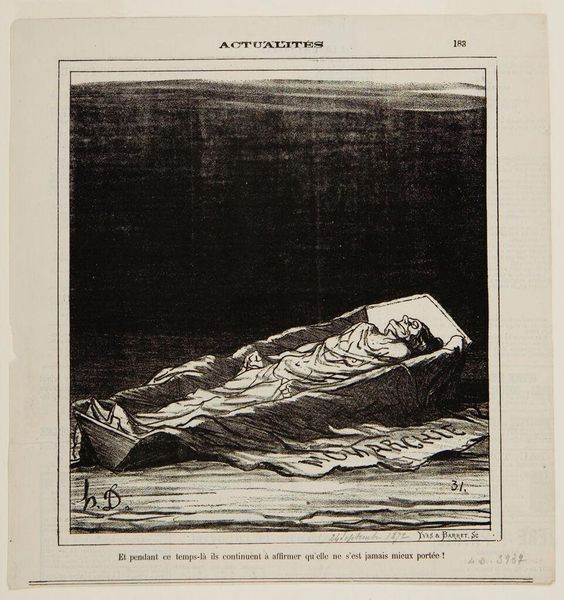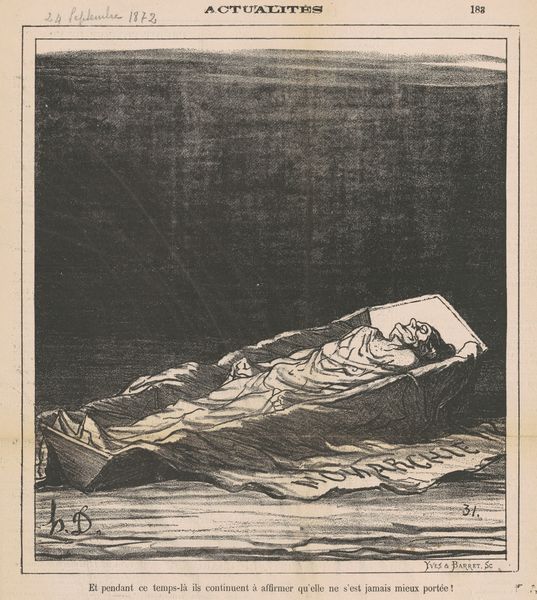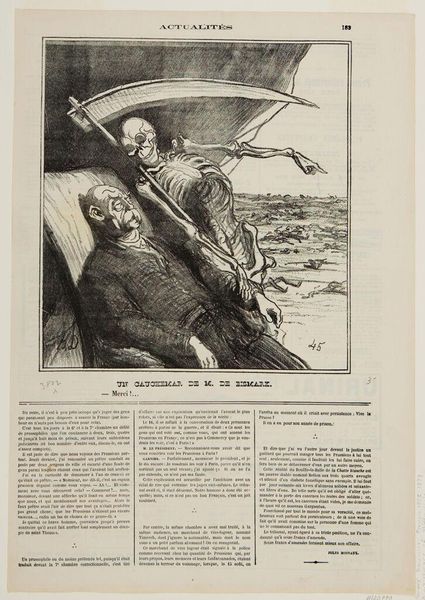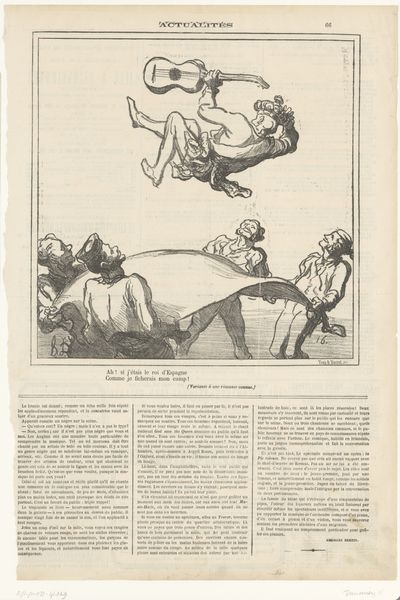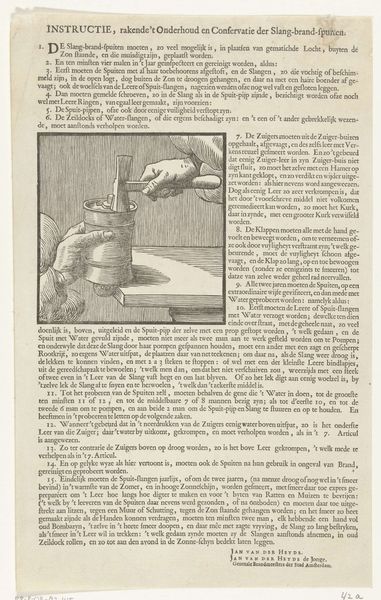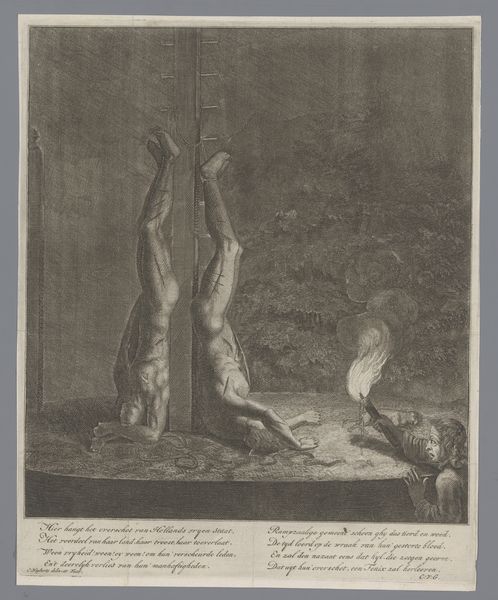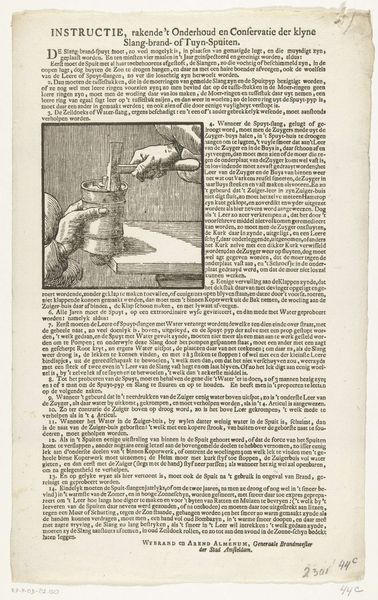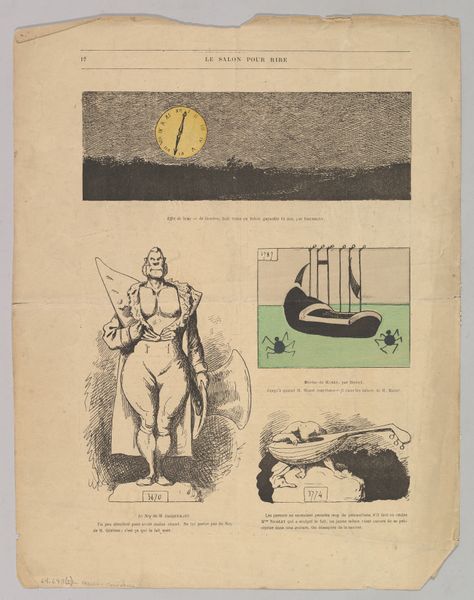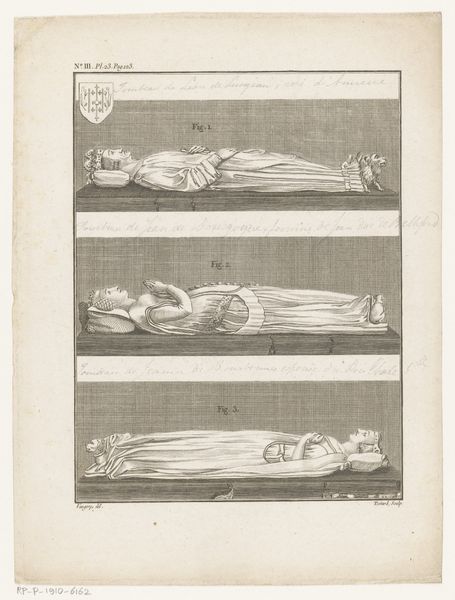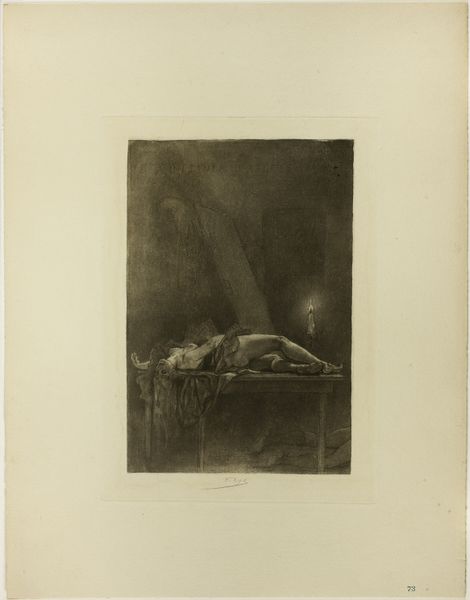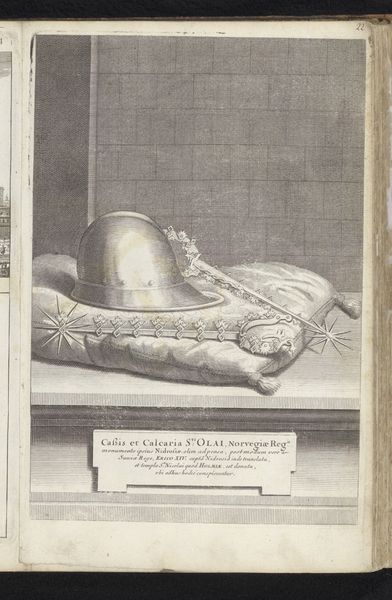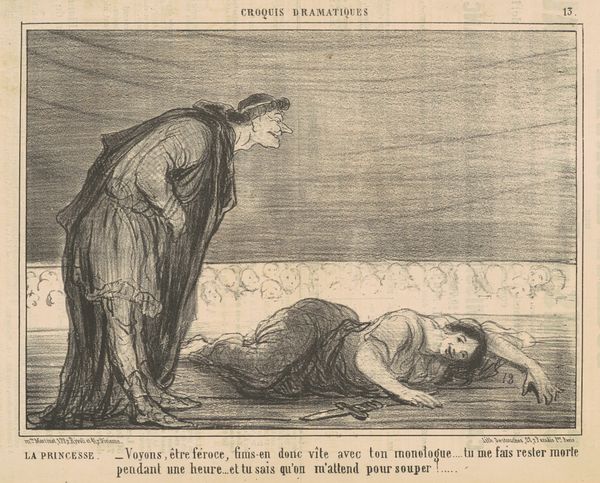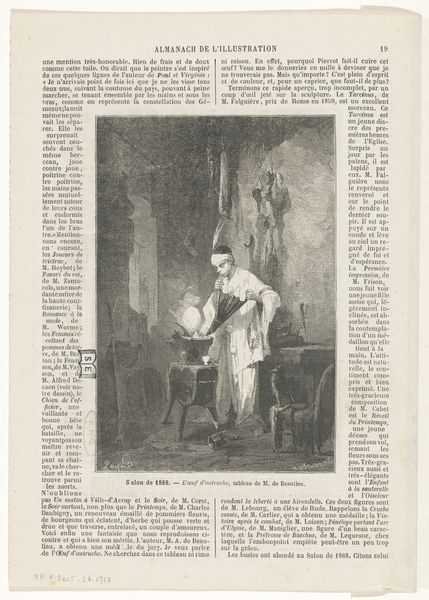
Meanwhile They Keep on Insisting that She Has Never Been Better, plate 183 from Actualités 1872
0:00
0:00
Dimensions: 237 × 215 mm (image); 413 × 283 mm (sheet)
Copyright: Public Domain
Editor: This lithograph by Honoré Daumier, made in 1872, is titled "Meanwhile They Keep on Insisting that She Has Never Been Better." It shows a figure in what appears to be a makeshift boat or coffin. The heavy use of dark tones creates a rather somber, almost desperate mood. What strikes me most is the material; the coarse quality of the lithographic stone and paper lends it a certain raw immediacy. What do you see in this piece? Curator: What interests me immediately is how Daumier, through this lithographic process – think about the labor involved in grinding the stone, the specific inks used, the printing presses – is engaging in a very direct commentary on the political climate. The ‘she’ in the title, coupled with the inscription on the vessel – 'Monarchie' if I'm reading it correctly – points to a very critical assessment of the French monarchy after the Franco-Prussian War. Do you see how the seemingly 'high art' medium of printmaking is here serving a very immediate, almost journalistic purpose? Editor: I see what you mean. The lithograph's mass production allowed for widespread dissemination of this political satire. The contrast between the supposed high status of the monarchy and its representation in a 'low art' print really highlights the instability of the time. But does the Romantic style also clash with the material process itself? Curator: Absolutely. The Romantic ideals of the era, with their emphasis on emotionality and individualism, get subverted by the mechanics of the lithograph. The standardization inherent in printmaking clashes with any singular authorial intention. And we must not forget the context in which these prints were consumed. These prints became embedded in the daily lives and political discussions of ordinary people, radically altering the perceived purpose of art. Editor: So the meaning isn't solely in the image, but also in the means of its creation and distribution, right? This gives me a totally different perspective on printmaking as a means of resistance. Curator: Precisely. Looking at the process allows us to view "high art" through a socio-political lens. It’s like dissecting history, layer by layer.
Comments
No comments
Be the first to comment and join the conversation on the ultimate creative platform.
